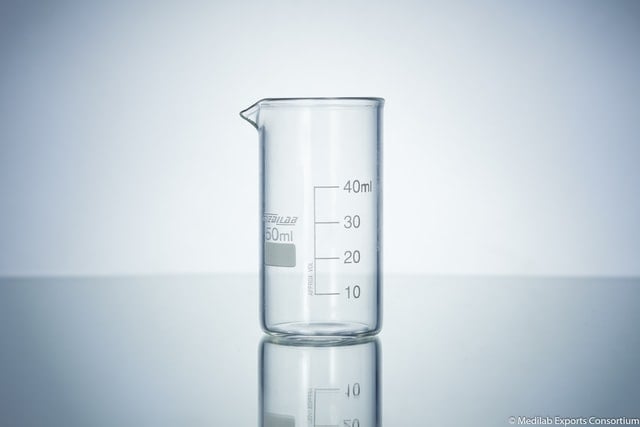
Reviewed and Updated: October 28th, 2024
9 min read
Vitamin D isn’t just one vitamin; It’s a whole family of nutrients that are similar but have different chemical structures. Vitamin D2 and D3 are the common forms, and they both help you maintain healthy levels of vitamin D, but they have a few critical differences.
The different types of vitamin D come from various sources, and one is more effective at raising your levels. Which vitamin D supplement is the best? Let’s find out.
Related: The Best Times to Take Vitamins and Supplements
What Is Vitamin D?

Vitamin D is an essential vitamin that is fat-soluble and regulates bone growth through calcium absorption, and it also helps your immune system function correctly. One of the main ways your body gets its supply of vitamin D is by your skin being exposed to sunlight. Those who cannot get sufficient sun exposure have to ensure their diet provides them with adequate amounts of vitamin D.
It’s not easy to get the correct amount of vitamin D from natural sources in your diet alone, leading to many people having a vitamin D deficiency. Luckily, many companies add vitamin D to products like milk and margarine to make it easier to maintain healthy levels. Vitamin D supplements are another popular way to ensure that you are getting enough not to be deficient.
There are two primary forms of vitamin D: vitamin D2 and vitamin D3.
What is Vitamin D2?
Vitamin D2 (ergocalciferol) is what people are usually talking about when they mention vitamin D. Vitamin D2 is typically only found in fortified foods, plant sources, and dietary supplements. It is much cheaper to produce, leading to vitamin D2 being the most common form added to food products.
Sources of Vitamin D2
Vitamin D2 is produced by plants when exposed to UV lights and is not found in animal products like vitamin D3.
The most common places to find naturally occurring vitamin D2 are:
- Mushrooms: whether grown with a UV light or wild
- Fortified foods: margarine, milk, bread, and fortified breakfast cereals
- Dietary supplements: prescription or over-the-counter
What is Vitamin D3?

Vitamin D3 (cholecalciferol) is the opposite of vitamin D2; it comes from animal sources and products rather than plants. Sunlight is where most of us get our vitamin D3 needs, and unlike vitamin D in our foods and supplements, it is impossible to get too much when it’s produced in your skin through sunlight; your body simply produces less when you are at a suitable level.
Sources of Vitamin D3
Vitamin D3 is what our body naturally produces when we spend time in the sun. Other natural sources of vitamin D3 include:
- Fish: especially salmon, sardines, and tuna
- Fish oil
- Egg yolk
- Beef liver
- Butter
- Dietary supplements: over-the-counter vitamin D3 and lanolin
Are Vitamin D2 and D3 the Same Thing?
While vitamin D2 and vitamin D3 are similar, they are two different forms of vitamin D. Vitamin D2 (typically referred to as just vitamin D) is ergocalciferol and is found in plant-based sources. Vitamin D3, cholecalciferol, is found in animal-based sources and is naturally produced by the body.
They are both similarly processed in the body, but vitamin D3 provides higher levels of the compound 25-hydroxyvitamin D, which introduces vitamin D to the body.
What Are the Differences Between Vitamin D2 and D3?
Vitamin D3 is what your body and skin make when exposed to sunlight. UVB radiation comes from the sunlight and triggers your skin cells to form the vitamin. The process for vitamin D2 in plant oils is similar in how it reacts to the sunlight.
Vitamin D3 naturally occurs in the body, and people who spend ample time in the sunlight are likely to get enough of the vitamin. Where you live also plays a role in how much sunlight is needed to produce sufficient amounts of vitamin D; the further away you are from the equator, the more sun exposure it takes to produce the vitamin.
The largest difference between vitamin D2 and vitamin D3 is simply where the vitamin comes from: plant sources, animal sources, or sunlight.
Is Vitamin D2 or D3 More Effective?
While both vitamin D2 and D3 effectively raise the vitamin D levels in your body, one of them is much more efficient. According to these results, vitamin D3 raises your vitamin D levels almost twice as efficiently as vitamin D2. Additionally, in a retrospective cohort study regarding severe vitamin D deficiency, injectable vitamin D3 elevated the levels by 6.1 ng/mL compared to injectable vitamin D2 which raised the levels by 3.2 ng/mL.
When your liver metabolizes vitamins D2 and D3, they turn into compounds called 25-hydroxyvitamin D2 and 25-hydroxyvitamin D3. Those compounds together are called calcifediol, which is the main form of vitamin D, and how its levels are measured in your system.
Vitamin D2 has been shown to make less calcifediol than the same amount of D3 does. Vitamin D3 is typically the best type of supplement to use if raising vitamin D levels are your only concern.
Vitamin D2 supplements also have the reputation of being lower quality than their D3 counterparts, and they are more likely to deteriorate over time due to fluctuations in temperature and humidity levels.
Why Do Healthcare Providers Prescribe Vitamin D2 Instead of D3?

High concentrations of vitamin D2 are only available by prescription, unlike D3, which can be bought in the same doses over-the-counter. This is because vitamin D2 is used to treat other medical conditions, like:
- Hypoparathyroidism: This condition happens when your parathyroid glands don’t produce enough of the PTH hormone that controls and regulates vitamin D and calcium levels.
- Osteomalacia: This condition is the weakening of bones caused by insufficient vitamin D levels that don’t allow you to absorb enough calcium.
- Hypocalcemia: This happens when your calcium levels are too low, and it is typically linked with either a magnesium or vitamin D deficiency.
The Benefits of Vitamin D
Vitamin D is essential for keeping your body healthy and, other than reducing your risks for other problems, it comes with many benefits.
Related: The Benefits of COQ10
- Bone strength: Vitamin D promotes the body’s absorption of calcium to build-up and strengthen bones. It supports bone growth and helps prevent them from becoming brittle. Vitamin D as a result helps prevent osteoporosis, which stems from reduced density and bone quality.
- Muscle strength: Vitamin D also helps strengthen your muscles, and a lack of the vitamin increases the risks of having weak muscles. The muscle-strengthening properties of vitamin D are especially important for older adults, as it can help prevent falls, which are a common problem that can lead to substantial disability.
- Immune system support: Vitamin D helps support the immune system by fending off harmful viruses and bacteria. According to this research, vitamin D supplements have been shown to reduce the risks of respiratory infections. The winter season is a risk factor for low vitamin D levels; supplements can help you avoid colds and infections.
- Oral health: Calcium plays an important role in oral health by lowering the risks of gum disease and tooth decay as vitamin D helps calcium absorption in the body.
- Diabetes prevention: While the evidence is not conclusive, vitamin D might prove to be helpful in preventing type one and two diabetes. This study shows that when vitamin D is combined with a calcium supplement, it can help lower the risk of getting type two diabetes because it improves tolerance of glucose and insulin resistance.
- Lower blood pressure: According to a recent review, vitamin D may be an effective way to treat high blood pressure by keeping blood vessels healthier and more flexible promoting better. Vitamin D deficiency, even in the short-term, can lead to high blood pressure and organ damage. Vitamin D supplements are becoming a popular way to treat these issues.
- Weight loss: Low vitamin D levels are linked to obesity. One study shows that taking calcium and vitamin D supplements can help you lose weight and notes that the combination also has an appetite-suppressing effect due to increased levels of serotonin -which aids in appetite control.
- May help with depression: This review article shows a significant correlation between vitamin D deficiency and depression. Another study, suggests the presence of Vitamin D receptors in the hippocampus, revealing that vitamin D is a potent modulator for the expression of neurotransmitters which act as antidepressants. What is unknown about the relationship is if the low vitamin D levels are the cause of depression or an effect of it .
- Reduced cancer risk: There have been various studies about vitamin D levels and cancer that show that the vitamin may be effective in fighting different types of cancers. Increasing evidence shows the link between healthy vitamin D levels and a reduced risk of cancer.
How Much Vitamin D Do You Need?

While there is not a single answer for every person, most adults do not get enough vitamin D from the sunlight and their diet. The US Institute of Medicine recommends for adults to take a daily dose of vitamin D in the range of 400-800 IU, and people who don’t get much sun exposure may need to take higher amounts.
Eating more fortified foods and adding a daily vitamin D3 supplement to your diet is generally recommended for most adults to maintain healthy vitamin D levels.
Symptoms of a Vitamin D Deficiency
Vitamin D is important for regulating many aspects of your body, and a deficiency can cause many adverse effects, including:
- Getting sick often
- Chronic tiredness and fatigue
- Bone and lower back pain
- Depression and anxiety
- Slow healing of injuries
- Bone loss
- Hair loss
- Muscle and joint pain
- Weight gain
- Irritability and bad moods
Related: Tips to Maintain Flexible and Healthy Joints
Health Risks Associated With Vitamin D Deficiency
Vitamin D deficiencies can lead to serious health conditions down the road, like:
- High blood pressure
- Heart disease
- Immune system disorders
- Colon, prostate, and breast cancer
- Multiple sclerosis
- Osteoporosis
Side Effects of Vitamin D vs D3
There are no common known side effects of taking regular amounts of Vitamin D or D3. In extremely rare instances, those who take megadoses of Vitamin D suffer from hypervitaminosis D, or Vitamin D toxicity.
Drug Interactions
Vitamin D and D3 are both digested and absorbed by the liver so they have similar drug interactions.
Before taking any supplements, discuss with your doctor if there are any potential threats. Be prepared to discuss your current diet as Vitamin D can increase the absorption of all minerals, not just calcium. As a result, combining Vitamin D with certain medications can raise calcium or aluminum levels higher than normal.
To learn more specifics about Vitamin D interactions, read this article from The Mayo Clinic.
Bottom Line
For your health, it’s essential to ensure that you are maintaining healthy levels of vitamin D. Both forms are largely similar with the main difference being where they come from, availability and ability to raise your vitamin D levels.
Most adults need to add a supplement to their diet to maintain the correct levels of vitamin D. Consider this one!
Disclaimer: The Best in Nature blog is written for informational purposes and not to be taken as medical advice. If you are worried about your immediate health, please seek the help of a medical professional.
© 2024 Best in Nature All rights reserved






Validate your login
Sign In
Create New Account